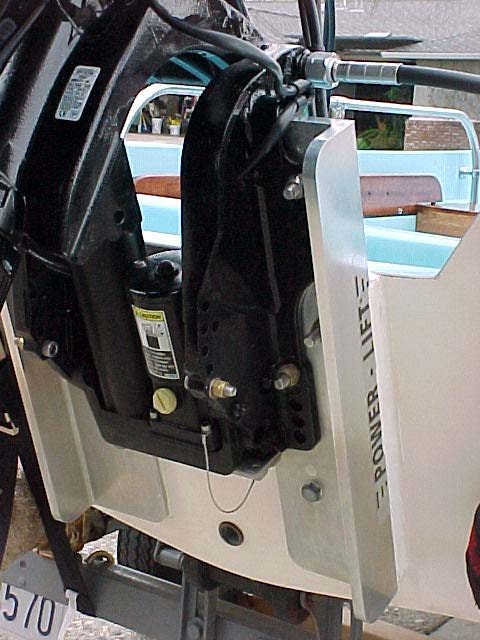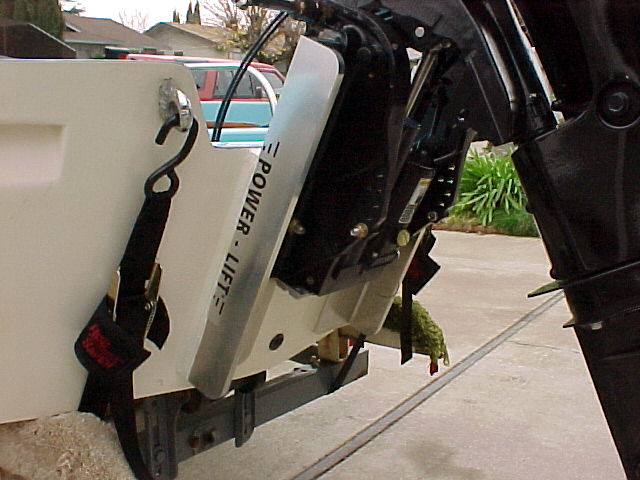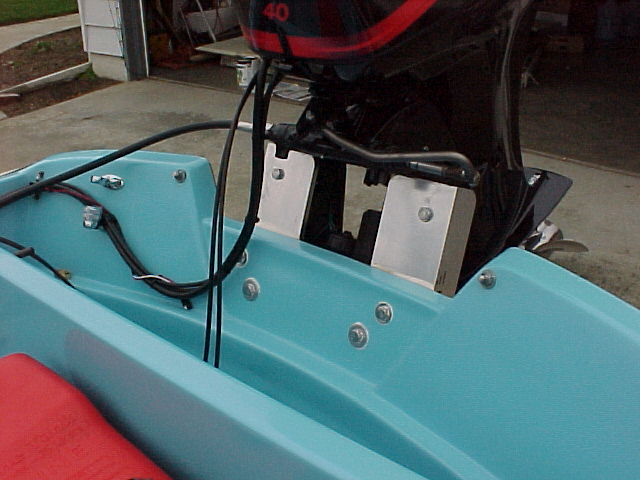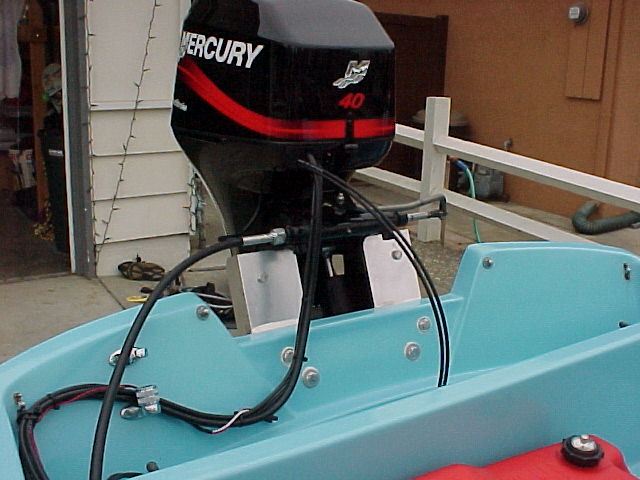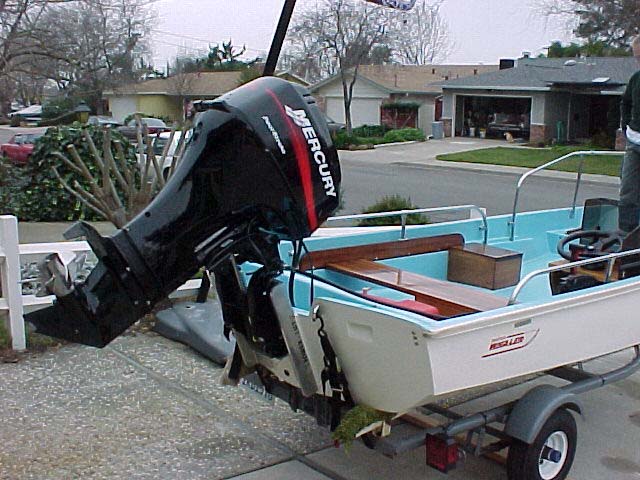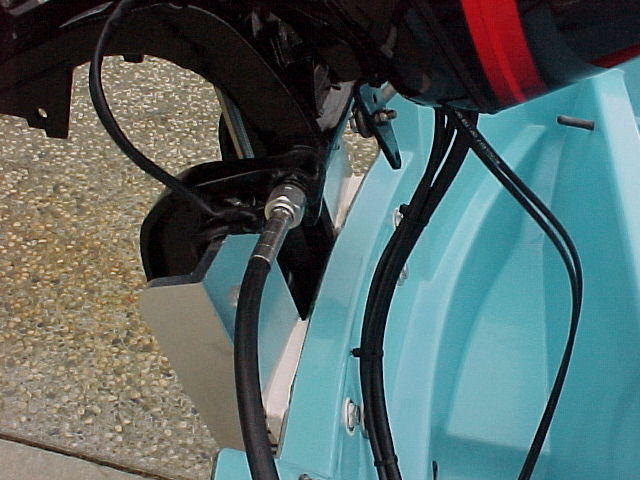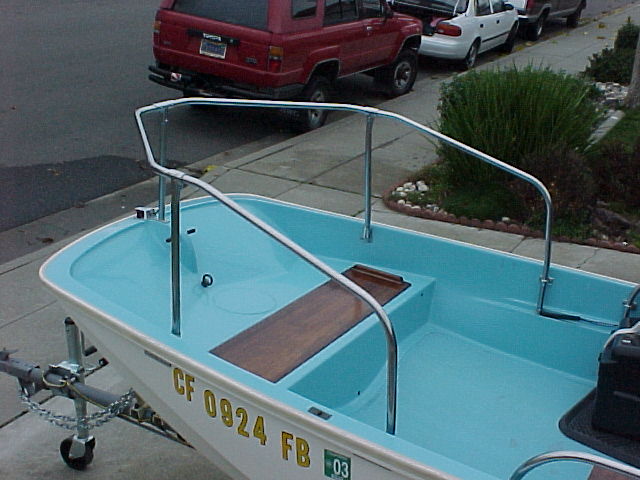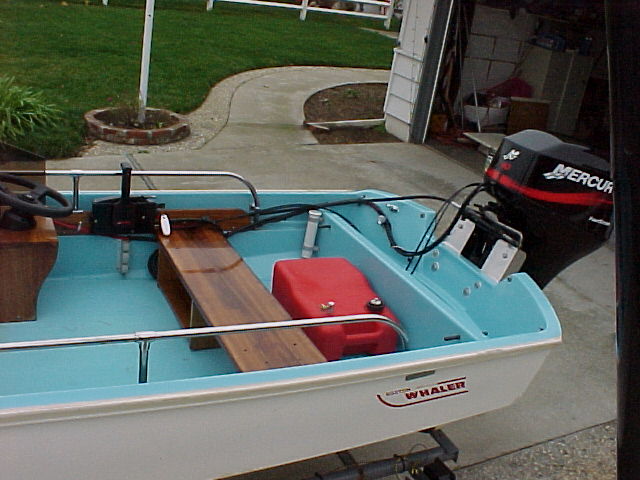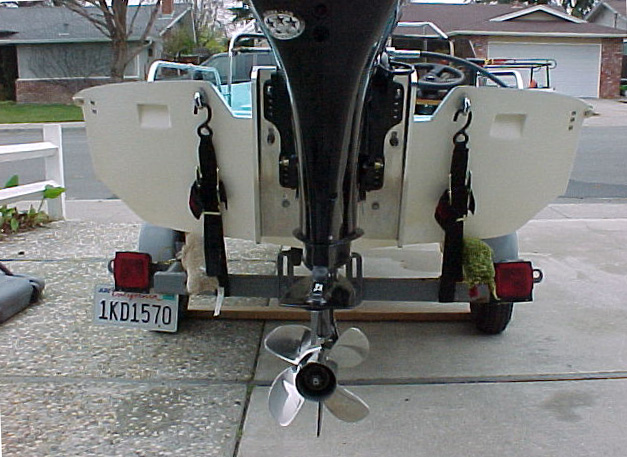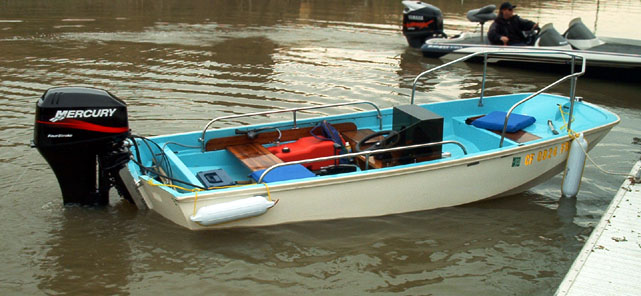"I acquired the boat, hull number 5620, in the spring of 2001.
The previous owner had always used clamp-on outboard motors
so the transom had never been drilled.
After comparing various outboard motors in the 25-40 HP range, I decided on a
Mercury 40-HP 4-stroke. I chose a 20-inch shaft model for several
reasons. First, it had a power trim and tilt option that I thought would
aid in operating the motor given its 212 pound weight.
Second, it would make upgrading the steering from the original rope/pulley
to Teleflex a snap.
Finally, if something were to happen to the boat, the 20-inch shaft
motor would hold more value compared to 15-inch shaft.
"I purchased a set of CMC Vertical Extensions to raise the motor.
These jackplates were quite sturdy, had plenty of drilled holes to accommodate
standard bolt patterns, and created a minimum of set-back.
By using separate plates, I could also ensure that the bottom of the plates
would not block the drain on the outer hull.
"The problem I faced when installing the motor was how to fit the flat
surfaces of the jackplates to the 13-footer's curved transom.
I did not want to place a bending force on the cast aluminum outboard
mounting bracket, nor did I want to use washers as shims.
I decided to create a pair of shims from 1/8th-inch thick plexiglass sheets.
The shims would measure the length of the jackplates and would decrease
in taper in width inward toward the center of the transom.
I used 1/8th-inch plexiglass because the finished shim could be flexed
a little to form to the transom and I could create a smoother taper.
"Using 1-inch plywood, I made a template of the outboard mounting
bracket, complete with bolt pattern holes.
I clamped the template to the outside of the transom and was able
to determine the thickness and degree of taper for the shims.
Next, I cut the plexiglass sheets into strips to fit the dimensions of
the jackplate surface minus 1/4-inch on all sides.
I wanted a "gutter" in which I could put ample quantities of 3M-5200 sealant
to seal the outer edges of the shims and have even finished surfaces.
I cut more plexiglass into strips of decreasing width and epoxied the strips
together to form a shim.
Again using the plywood template, I drilled bolt holes into each shim.
"Finally, it was time to drill the transom!
"I held my breath after re-measuring and re-checking the placement
of my plywood template, and drilled four holes.
After nearly forty years, the wood was dry and solid (it even smelled good).
I doubled up on the upper holes so I would have four solid
through-bolted attachment points.
"I applied copious amounts of 5200 to all the mating surfaces and installed
the jackplates to the transom.
With the help of two adults and a come-a-long, I hoisted the outboard,
positioned it onto the jackplates, then bolted it all together.
"With some reluctance I used lag screws to attach the bottom of the
jackplates to the transom.
I would have preferred to through-bolt the bottom holes, but could not
find a practical way of doing it without cutting large holes in the bottom
of the transom which would have to fiberglassed over.
After a lot of trailering, reversing the outboard and a summer of use,
I have yet to encounter any loosening of the lag screws or any other
part of the installation.
When trailering the boat, I use a outboard support lever.
"Before embarking on this installation, I read nearly every pertinent post in
the Classic Whaler Forum archives.
Simply put, I could not have done this without the advice and knowledge
I received through the Reference section and Forum contributors.
I love Classic Whalers and have loved them since I was a young teen.
Something about the blue interior and the hull design quickens my pulse.
In my opinion jimh has created the finest resource and
historical record in existence on these beautiful boats. Thanks."
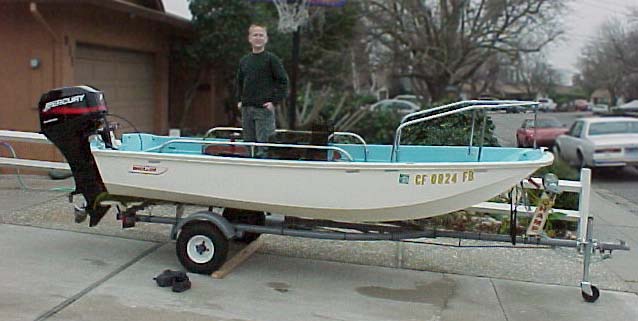
![[Logo: WHALER CETACEA]](graphics/cetaceaLogo230x60Trans.gif)
